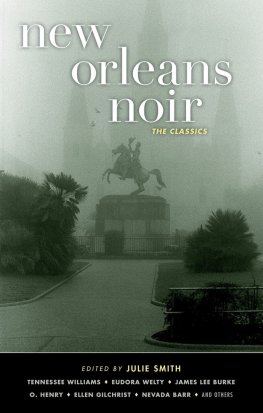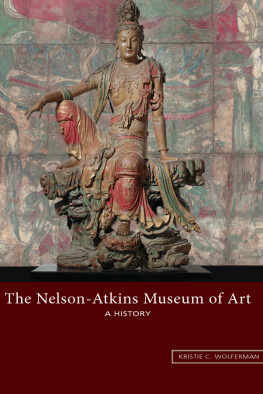Bishops Waltham
1
I chose Bishops Waltham Moors as a subject because Im interested in the area and Im concerned about its future. This was the opening sentence of the GCSE Geography enquiry I wrote at the age of fourteen. The aim of the enquiry, it went on, will be to discover what the state of the Moors will be in twenty years. Will it be the natural haven it is now OR will it be a landscape of red-brick houses with no wetland and therefore no springs and no river Hamble? OR will the springs dry up without the construction of houses and be lost to the water authority?
It was typewritten with a hate-mailers fondness for capitals, and scabbed with what used to be called liquid paper. On its cover was a collage of a kingfisher composed of carefully scissored pieces of coloured paper, and, in painstaking Letraset, as if the question were the birds: What is the Future of Bishops Waltham Moors?
The market town of Bishops Waltham lies between Winchesters chalk downs and the London clay of the Hampshire coastal plain. Next to the bypass the mediaeval ruins of the Bishops of Winchesters palace still stand. We moved to the town in 1988, from commuter-belt Berkshire, my father having got a new job in Southampton. On one side of the road were the older houses, built in the twenties. On the other, the two acres of dense young woodland in whose centre stood a derelict bungalow, not long abandoned, its front room fire-blackened, the floorboards wrenched up, the windows smashed. A place where foxes went to eat.
At the end of the lane was the road to the next village, and across that road, not quite opposite the junction, a padlocked five-bar gate clogged with brambles; and beyond it not a lane but a narrow muddy footpath, flanked on one side by a ditch and a bank of dredgings, and on the other side by the adjoining houses overgrown laurel hedge. A hundred yards or so long, this path and when it opened out, onto the first field, it was like arriving at a tunnels mouth, and looking out on a new country.
The Moors was the name given to these few acres. The first field was meadow, ancient and unimproved: waist-high by late June, and hazy with flowering grasses. Scattered among the grasses were oxeye daisies and knapweed and yellow rattle, meadowsweet, dyers greenweed and birds-foot trefoil, and buttercups, and red clover red clover dense along the path edge, vibrant with bees and then, at haymaking time, over the bee-hum, the call of lesser black-backed gulls, circling, two hundred feet up.
The path continued down the meadows edge, a narrow cutting in the sward, until you passed, beyond the left-hand barbed wire, the first of the two craters not, as local legend had it, caused by Messerschmitts offloading surplus bombs on the way back to Germany (the Portsmouth docks were nearby), but a flint-pit of unknown antiquity, its sides grown with rowan and elder and oaks, its floor home to badgers and rats and, in summer, thick with wild garlic thick with its thick smell, too.
A line of hazels marked the end of the first field, and then there was the second meadow less abundant, less diverse than the first, dominated by rank grass. Marking the left-hand boundary of this field was a much denser and older rank of hazels, whose pollarded boughs formed a passageway too dense for anything but moss to thrive in their shadow. The hazel hedge led to the far line of woodland with its four-hundred-year-old boundary oaks and ancient boundary bank. And where the oaks and the hazels met was the way onto the moor.
The moor was the centre of this place, the moor was the Moors, but the Moors was also the meadow and the wood. The moor was hard to cross. It was mostly purple moor-grass , tussock sedge and rush; it was a pale, rough, uncultivated place. Even in summer, when the pumping station was active, it was wet enough in parts to give you a trainer-full of slurried peat. Once, as in a dream, I mistook the stream that crossed the moor, with its unbroken surface of green-grey pondweed, for a footpath out here, where no one came and plunged to my waist. While the soil was acid, the springs that rose through it were chalk alkaline and therefore the moor supported not only acid-loving plants like orchids and even, on its drier tussocks, heather, but, right next to them, chalk species like cowslips and milkwort. I knew that if you added a splash of vinegar to a spoonful of bicarb it fizzed and foamed lividly. And yet here a kind of truce had occurred.
It was on the moor that I began to spend my dusks after school and my before-school dawns, and every weekend, and every holiday. At first I went alone, leaving the house before sunrise and padding across the silent road to the woods at the edge, where, in a wax jacket and an army-surplus scrim scarf, I set up Dads camera on the Victorian brass- and-lacquer tripod that had belonged to my grandfather (the threaded tripod-hole on a cameras base has remained standard). Until the sun came up, I waited there, with my Thermos, and watched. Sometimes I cycled to the entrance at the other edge of the moor, camera in my rucksack, tripod strapped to the crossbar in its leather case. Occasionally I photographed a distant, enquiring roe deer that had briefly wandered from the wood. Once, while I was waiting for a heron, a solitary man with a shotgun broken over his shoulder crept across the moor a hundred yards away, and stopped, and gazed, head tipped, into the scrub where I was lying.
Sometimes Dad came with me, and the two of us sat there as the sun rose, on striped camping stools, waiting for deer or herons or kingfishers. He puffed at his pipe (a lesson in the difference between smoke and mist). The hard tapping as he cleared its bole was answered by a woodpecker in the woods behind us. Usually we went home for breakfast having seen nothing but magpies and cows.
Naturally the Moors would be the subject of my enquiry. It preoccupied me for months, though I had hardly thought about its one day being graded and its spellings corrected (dovelopement, signes, bieng, wether). One evening, after school, I fixed a row of bamboo canes in a streams gravel bed, and over the following month went back every day and measured the water level against the centimetred notches. Portsmouth Water Authority has a borehole at Hoe pumping station and this is seen by many as the cause of the shrinking area of the moor, I reported. The pumping station, in one of the fields adjoining the meadow, had been installed during the war to supply water to Gosport, with its naval base. Although over-pumping was apparently feircely denied by the water board (their letter in reply to mine having been lost, its fierceness is unverifiable), my graphs recorded a lagging correlation between periods when the pumping station was active and dips in the level of my stream. I spoke to others who knew the Moors better than me the couple at Suetts Farm, the council warden and was told that, following those periods when the pumping station was active, the water levels on the Moors were seen to drop immediately, but would take days to recover. In the early 2000s, following the Moors designation as a Site of Special Scientific Interest, the pumping station was mothballed, and the water company was paid to go away and sink a borehole elsewhere. The water table rose and rose, until long-empty ditches became wet again, and the old watercress beds refilled, and parts of the moor that had been dry for years were impassable in anything but wellies.

















